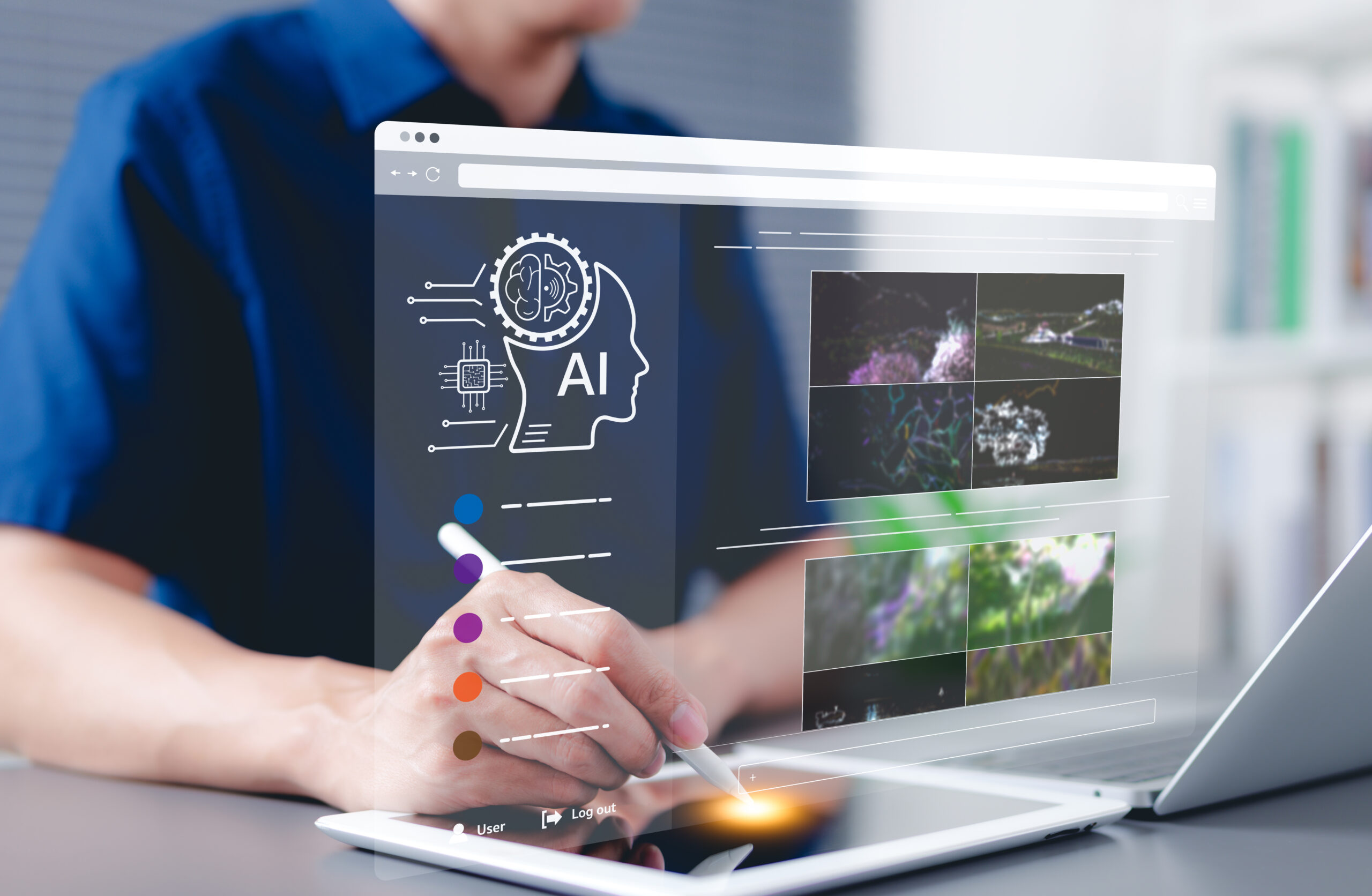What does Industry 4.0 mean? What are Industry 4.0 technologies? What are the advantages of Industry 4.0? How is Industry 4.0 reshaping engineering and design?
The era of Industry 4.0 marks a groundbreaking shift in how industries approach engineering and design, driven by advancements like IoT, AI, and cyber-physical systems. This blog explores the essential skills engineers and designers must develop, including technical proficiency in areas like IoT systems, robotics, and additive manufacturing, alongside crucial soft skills such as adaptability and interdisciplinary collaboration. These abilities are critical to harnessing the full potential of emerging technologies while addressing complex industrial challenges.
Equipping professionals for success in Industry 4.0 also involves leveraging cutting-edge tools such as advanced CAD platforms, simulation technologies, and digital twin systems. In addition, a focus on sustainability and data-driven decision-making ensures engineers and designers can create innovative, future-ready solutions. By cultivating a mix of technical expertise, creative thinking, and leadership, individuals can thrive in this transformative age while contributing to a more efficient and sustainable industrial future.
Industry 4.0 marks a revolutionary transformation in how we approach engineering and design. The convergence of cyber-physical systems, the Internet of Things (IoT), and artificial intelligence has created a landscape where traditional engineering and design approaches are no longer sufficient. As smart factories emerge and digital transformation accelerates across industries, engineers and designers must evolve their skill sets and embrace new tools to remain at the forefront of innovation. In this article, we’ll explore which skills professionals will need to thrive in the Fourth Industrial Revolution.
Table of Contents:
Data Analysis and Interpretation
Interdisciplinary Collaboration
Problem-solving and Critical Thinking
Essential Tools for Engineers and Designers
Core Skills for Industry 4.0
Also known as 4IR, Industry 4.0 is a relatively new term used to describe the rapid technological advancement in the 21st century. It includes, among other things, the joining of diverse technologies that blur the lines between the physical, digital, and even biological worlds.
Success in this new era requires a combination of technical expertise, digital literacy, and adaptive capabilities that enable professionals to harness the full potential of emerging technologies while delivering innovative solutions to complex challenges. Some of the most important skills include:
Technical Proficiency
The foundation of success in Industry 4.0 begins with a robust understanding of its core technologies. Engineers and designers must develop proficiency in IoT systems, which form the backbone of smart manufacturing environments. This includes understanding sensor networks, data collection protocols, and the integration of physical devices with digital systems.
A 2024 survey found that 83% of companies are investing in IoT, underscoring the need for engineers to manage interconnected devices and systems. The survey also showed a marked increase in AI investments. Artificial intelligence and machine learning knowledge have become increasingly crucial for engineers since these technologies drive automation, predictive maintenance, and optimization across industrial processes.
Robotics and automation expertise has also evolved from a specialized skill to a fundamental requirement. In fact, nearly three-quarters of industry experts predict that human-robotic interaction (72%) and automation (74%) will become increasingly important. Modern engineers must understand collaborative robotics, autonomous systems, and the principles of human-robot interaction. This knowledge extends to programming interfaces, safety protocols, and optimizing automated workflows.
Additive manufacturing, particularly 3D printing, has also revolutionized prototyping and production processes. Professionals must understand various printing technologies, materials science, and the integration of new manufacturing methods with traditional production. This includes knowledge of design for additive manufacturing (DfAM) principles and the ability to optimize designs for both functionality and manufacturability.

Experience Our No-Obligation Trial: Uncover How Our Proven Engineering Outsourcing Services Can Elevate
Your Business


Experience Our
No-Obligation Trial: Uncover How Our Proven Engineering Outsourcing Services Can Elevate
Your Business
Data Analysis and Interpretation
The proliferation of sensors and connected devices has led to an explosion in industrial data generation. Engineers and designers must develop strong capabilities in handling and analyzing large datasets, including data cleaning, validation, and storage optimization skills. This extends to understanding database management systems and data architecture principles that support efficient information flow across manufacturing systems.
Predictive analytics has become a cornerstone of modern industrial operations. Professionals must interpret complex data patterns, develop predictive models, and translate analytical insights into actionable recommendations. This includes proficiency in statistical analysis, machine learning algorithms, and visualization tools that communicate findings effectively to diverse stakeholders.
Interdisciplinary Collaboration
Industry 4.0 has dissolved traditional boundaries between engineering disciplines and departments. Success requires the ability to work effectively across multidisciplinary teams, combining expertise in mechanical, electrical, and software engineering with design thinking and business strategy. Engineers and designers must develop strong collaboration skills that enable them to bridge technical and creative perspectives.
Communication has become increasingly critical as projects grow in complexity and scope. Professionals must articulate technical concepts to non-technical stakeholders, facilitate cross-functional teamwork, and maintain clear documentation of processes and decisions. This includes presenting data-driven insights, proposing solutions, and building consensus around technical approaches.
Problem-solving and Critical Thinking
The interconnected nature of Industry 4.0 demands sophisticated problem-solving abilities. Engineers and designers must develop systematic approaches to troubleshooting complex systems, considering the ripple effects of changes across integrated networks. This includes the ability to diagnose issues across multiple domains, from hardware malfunctions to software bugs and network connectivity problems.
Rapid technological evolution requires professionals to continuously adapt their problem-solving approaches. This includes staying current with emerging technologies, understanding their potential applications, and developing creative solutions that leverage new capabilities. Critical thinking skills must extend beyond technical problems to consider broader implications for business strategy, sustainability, and social impact.
Essential Tools for Engineers and Designers
In addition to specialized skills, engineers will need to leverage specialized tools that allow them to streamline processes and minimize potential errors. Some primary examples include:
Software Tools
Computer-Aided Design (CAD) and Computer-Aided Manufacturing (CAM) platforms have evolved significantly to meet Industry 4.0 demands. Modern professionals must master advanced CAD tools that support parametric modeling, generative design, and integration with digital manufacturing systems. This includes proficiency in industry-standard platforms and understanding their connectivity with broader digital ecosystems.
Simulation and virtual prototyping tools have become essential for reducing development cycles and optimizing designs before physical production. Engineers must understand finite element analysis (FEA), computational fluid dynamics (CFD), and multi-physics simulation tools. This extends to virtual commissioning systems that enable testing production processes in digital environments.
Cloud-based collaboration platforms have transformed how teams work together across global operations. With 81% of companies investing in cloud computing, engineers must be adept at utilizing cloud platforms for data storage and processing. Professionals must also be proficient in project management tools, version control systems, and collaborative design platforms that enable real-time cooperation across distributed teams. This includes understanding best practices for data security and intellectual property protection in cloud environments.
Hardware Innovations
Augmented Reality (AR) and Virtual Reality (VR) technologies have revolutionized design visualization and training processes. Engineers must understand how to leverage these tools for design reviews, maintenance procedures, and operator training. This includes knowledge of AR/VR development platforms, user interface design principles, and integration with existing engineering workflows.
Advanced sensing technologies and IoT-enabled devices form the foundation of the smart manufacturing market, which is expected to grow at a CAGR of 13.1% over the next seven years and total $658.41 billion by 2030. Professionals must understand sensor selection, deployment strategies, and integration with control systems. This includes knowledge of industrial communication protocols, edge computing principles, and strategies for maintaining robust sensor networks.
Digital Platforms
Digital twin technology has emerged as a powerful tool for optimizing industrial processes. Engineers must understand how to create and maintain digital representations of physical assets, including integrating real-time data and simulation capabilities. This extends to using digital twins for predictive maintenance, process optimization, and scenario planning.
Edge computing has also become crucial for managing the vast amounts of data generated in Industry 4.0 environments. Professionals must understand edge architecture principles, including strategies for distributed processing, local analytics, and seamless integration with cloud systems. This includes knowledge of edge security protocols and optimization techniques for reducing latency in critical applications.
Sustainability-Focused Tools
Environmental considerations have become central to engineering and design decisions. Professionals must master lifecycle analysis and sustainable design tools, including software for environmental impact assessment and materials selection. This includes understanding circular economy principles for optimizing resource efficiency throughout product lifecycles.
Carbon footprint tracking and resource management platforms have become essential for meeting sustainability goals. Engineers must know how to use these tools to measure, monitor, and optimize environmental impact across operations. This includes knowledge of regulations and reporting requirements that influence design and manufacturing decisions.
Soft Skills for Success
While key technical skills form the foundation for success in Industry 4.0, companies demand various soft skills to ensure an agile, well-rounded professional. These include:
Adaptability
The rapid pace of technological change in Industry 4.0 requires professionals to maintain a learning mindset. Engineers and designers must continuously update their knowledge of emerging technologies, industry trends, and best practices. This includes developing personal learning strategies and maintaining professional networks that support ongoing development.
Flexibility in approach and willingness to embrace new methodologies are crucial for success. Professionals must balance traditional engineering principles with innovative approaches, adapting their methods as technologies and market demands evolve. This includes the ability to evaluate and adopt new tools and processes effectively.

Experience Our No-Obligation Trial: Uncover How Our Proven Engineering Outsourcing Services Can Elevate
Your Business


Experience Our
No-Obligation Trial: Uncover How Our Proven Engineering Outsourcing Services Can Elevate
Your Business
Creativity
Innovation in Industry 4.0 requires creative thinking that extends beyond technical problem-solving. Engineers and designers must develop user-centered approaches that combine technological capabilities with human needs and preferences. This includes the ability to envision future scenarios and design solutions that anticipate evolving requirements.
Effective system design must incorporate flexibility and scalability to accommodate future technological advances. Professionals must think creatively about architecture and integration strategies that support long-term adaptability. This includes considering modularity, standardization, and future-proofing in design decisions.
Leadership and Vision
Success in Industry 4.0 requires leaders who can inspire teams to embrace technological transformation. Engineers and designers in leadership roles must develop skills in change management, team development, and strategic planning. This includes the ability to build consensus around new initiatives and maintain team motivation through challenging transitions.
Strategic thinking must align technical capabilities with business objectives and Industry 4.0 principles. Leaders must develop comprehensive visions that consider technological possibilities, market demands, and organizational capabilities. This includes prioritizing investments in tools and training that support long-term success.
Challenges and Strategies
The pace of technological advancement in Industry 4.0 presents significant challenges for engineers and designers. It’s not easy to stay current with emerging technologies while maintaining productivity in existing roles. The complexity of modern systems also demands increasingly specialized knowledge across multiple domains.
Resistance to change and technological adoption remains a significant hurdle in many organizations. Leaders must develop strategies for managing this resistance, including effective communication of benefits and careful planning of implementation processes. This includes addressing concerns about job security and the impact of automation on traditional roles.
Success in Industry 4.0 requires a strategic approach to professional development. Organizations and individuals must prioritize continuous learning through formal training programs, certifications, and practical experience. This includes leveraging online learning platforms, industry conferences, and internal knowledge-sharing initiatives.
Building strong professional networks has become increasingly important for staying current with industry developments. Engineers and designers should actively participate in professional communities, seek mentorship opportunities, and share knowledge with peers. This includes both technical networks and cross-disciplinary connections that support broader growth.
Conclusion
The transition to Industry 4.0 represents both a challenge and an opportunity for engineers and designers. Success in this new era requires a combination of technical expertise, digital literacy, and soft skills that enable professionals to navigate complex technological landscapes while delivering innovative solutions. By maintaining a proactive approach to skill development and embracing new tools and methodologies, engineers and designers can position themselves to thrive in the evolving industrial landscape.
The journey toward mastery in Industry 4.0 is continuous and demanding, but the rewards are substantial for those who can adapt. As technology continues to evolve, the most successful professionals will be those who maintain their technical edge while developing the leadership and creative capabilities needed to drive innovation. The future belongs to those who can effectively combine human ingenuity with technological advancement, creating solutions that address complex challenges while building a more sustainable and efficient industrial future.




